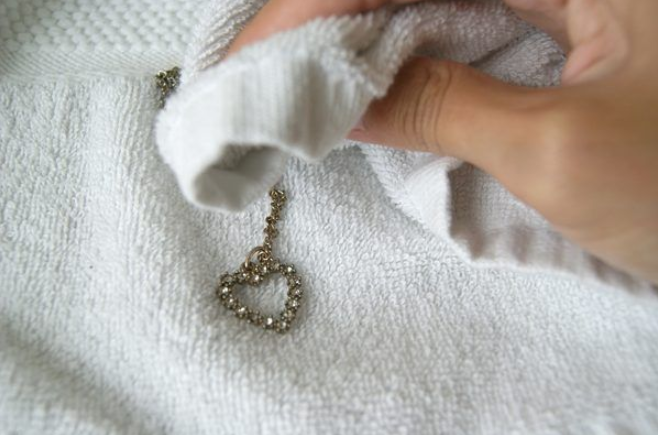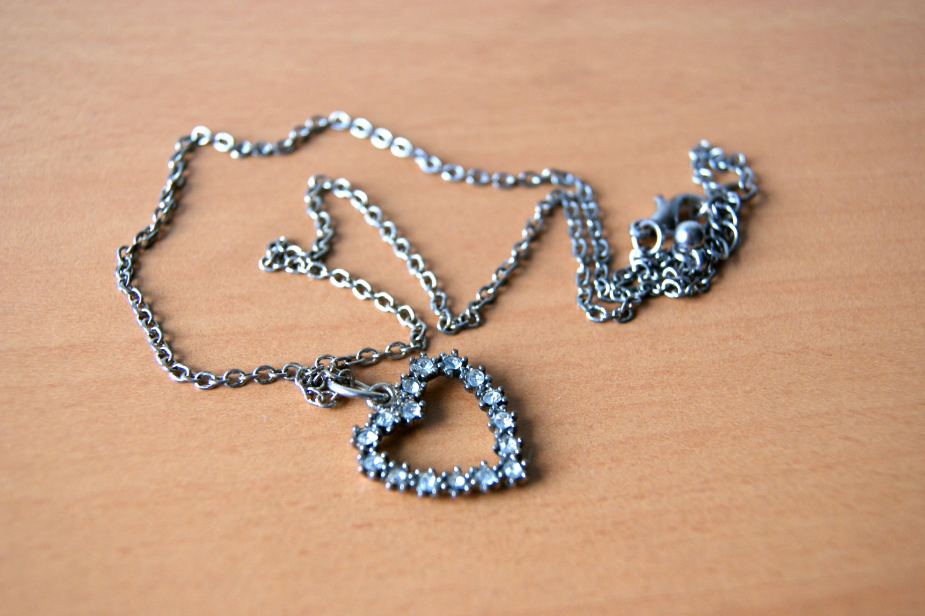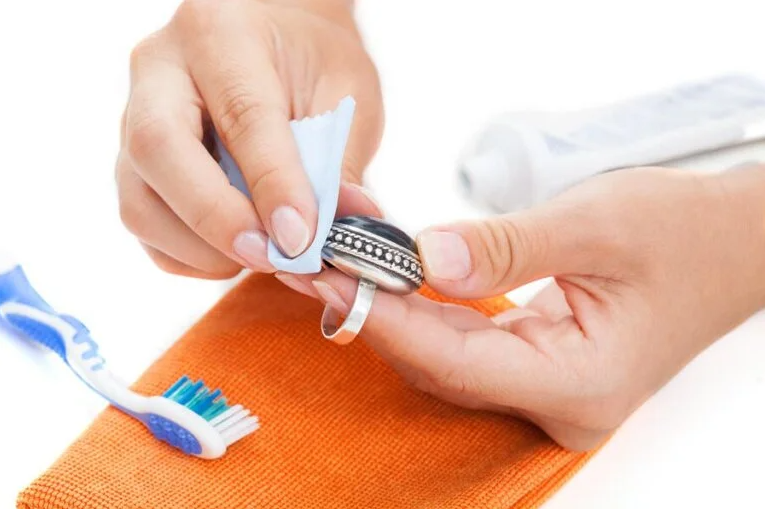Often cherished for its beauty and sentimental value, jewelry can lose its luster when rust makes an unwelcome appearance.
The presence of rust on jewelry, whether a beloved heirloom or a recent purchase, can be disheartening.
However, fear not, for there are effective ways to restore the shine and elegance of your jewelry by learning how to remove rust.
This guide will explore various methods and techniques to help you bid farewell to rust and rejuvenate your precious jewelry pieces, ensuring they continue to adorn you with their timeless charm.
Whether it’s a necklace, ring, bracelet, or any other cherished accessory, embark on this journey of rust removal and rediscover the beauty beneath the corrosion.
Factors Contributing to Rust Formation
Safeguarding your jewelry from rust involves a combination of environmental awareness, protective measures, and routine care.
By understanding these contributing factors and implementing preventive strategies, you can ensure that your jewelry remains a timeless and cherished accessory for years to come, free from the tarnish and corrosion of rust.
Environmental exposure (humidity, moisture)
Humidity and moisture, ever-present environmental adversaries, pose a perpetual and insidious threat to the pristine condition of your beloved jewelry pieces.
In locales characterized by elevated humidity levels, the atmospheric moisture acts as a relentless catalyst, permeating the porous surfaces of metal and inciting the inevitable onset of rust.
Furthermore, the seemingly innocuous activities of donning your jewelry, be it during strenuous physical exercises or basking in the sweltering embrace of a hot, humid summer day.
Inadvertently introduce additional moisture, rendering your cherished adornments even more susceptible to the creeping encroachment of rust’s corrosive embrace.
However, you possess potent allies in this battle against insidious corrosion: vigilant storage practices become your fortifications against humidity.
Deliberate choices to safeguard your jewelry by housing it in dry, excellent sanctuaries during periods of non-adornment create an unassailable bastion against moisture incursion.
Additionally, the reasonable employment of anti-tarnish storage solutions assumes the role of sentinel, actively absorbing excess moisture and forming a waterproof barrier, resolutely repelling the nefarious advances of rust.
Thereby preserving your jewelry’s brilliance and protecting it from the relentless march of time and oxidation.
Saltwater and chlorinated water
Jewelry immersed in the aqueous realms of salt water or chlorinated pools confronts a heightened peril in the relentless pursuit of rust formation.
Saltwater, a frequent acquaintance of coastal locales, harbors corrosive salts within its aqueous embrace, casting a sinister influence upon metal surfaces by propelling the oxidation process into overdrive.
In this marine milieu, jewelry, even when cherished and worn with devotion, becomes vulnerable to the insidious advances of rust.
Akin to salt water, chlorinated water, the ubiquitous poolside companion of swimmers seeking respite from the sun’s relentless rays, harbors its treacherous capabilities.
The chlorine, employed for sanitation and hygiene purposes, inadvertently becomes an unwitting accomplice in the corrosion saga, joining forces with moisture to expedite the tarnishing process.
Contact with acidic substances or certain chemicals
The world of jewelry, resplendent with its intricate designs and alluring craftsmanship, navigates a treacherous terrain where unsuspected encounters with acidic substances and chemicals can spell doom for its enduring beauty.
In the realm of cosmetics, where the quest for enhancing one’s allure knows no bounds, lies an unsuspecting adversary – acids and chemicals lurking within makeup formulations.
The irresistible allure of perfumes, infused with a symphony of scents, conceals a dangerous secret: the potential to contain compounds that can trigger tarnishing and rusting upon contact with jewelry.
Even the seemingly mundane chores of daily life, propelled by household cleaning products, belie the corrosive agents concealed within.
These substances, bearing acidic components, emerge as silent saboteurs of your precious adornments, orchestrating chemical reactions that lead to tarnish and rust.
Lack of regular cleaning and maintenance
Refrain from regular cleaning and maintenance for your jewelry can contribute to rust formation as dust, dirt, and body oils accumulate on metal surfaces, trapping moisture and promoting rust.
Establishing a routine cleaning regimen tailored to each metal type can renew your jewelry’s luster while denying rust a foothold.
Regular inspections are crucial to identify early rust or tarnish signs, allowing for swift intervention.
In this balance of meticulous cleaning and vigilant inspection, you preserve your jewelry’s timeless beauty, transcending the ravages of time and rust, ensuring it remains a testament to your taste and elegance.
The effort invested in caring for your jewelry sustains its allure and safeguards the sentimental value these cherished pieces hold in your heart.
Through this dedicated maintenance, you forge an enduring connection between yourself and your jewelry, ensuring that it continues to adorn you with grace and sophistication for years.
Materials Needed for Rust Removal
When you embark on the journey of rust removal, having suitable materials at your disposal is akin to arming yourself for a meticulous battle against the relentless forces of corrosion.
With its slow and steady encroachment on metal surfaces, Rust requires a thoughtful arsenal of materials to combat its insidious advances effectively.
Here, we present a comprehensive list of materials that can prove invaluable in your quest to restore metal objects to their former glory:
White vinegar
White vinegar, a ubiquitous household staple, is leading the battle against rust. Its mild acidity endows it with the versatility to effectively dissolve rust.
White vinegar’s unique chemical composition enables it to interact with rust, breaking down the corrosion and facilitating removal.
The non-toxic nature of white vinegar is a significant advantage, making it a safe choice for use on a wide range of metal surfaces without causing excessive harm or damage.
In the realm of rust removal, white vinegar’s ubiquity and gentle yet effective properties position it as a reliable and eco-friendly solution for restoring the luster of metal objects.
Baking soda
Baking soda, a ubiquitous kitchen ingredient, is a potent ally in rust removal endeavors.
Its partnership with water results in a gentle yet highly effective abrasive paste, ideal for scrubbing away surface rust.
This baking soda paste becomes particularly valuable in treating less severe rust cases or when the aim is to steer clear of harsher chemical agents.
Its versatility and accessibility make baking soda a reliable go-to solution in the ongoing battle against rust. It offers a safe and effective means of restoring metal surfaces to their former glory.
Lemon juice
Lemon juice, nature’s acidic gift, possesses rust-removing prowess. Its innate acidity makes it a potent agent for dissolving rust effectively, offering an eco-friendly alternative to more potent acids.
Beyond its rust-fighting capabilities, the pleasant citrus scent introduces a refreshing dimension to the cleaning process, elevating the overall experience.
In rust removal, lemon juice is a natural and aromatic solution, rejuvenating metal surfaces while imparting a delightful fragrance.
Toothbrush
The soft-bristle toothbrush emerges as a trusty companion in the mission to eradicate rust.
Its gentle yet firm bristles strike the perfect balance for effectively scrubbing rust from intricate metal surfaces without risking any harm or damage.
This versatile tool’s ability to reach into the nooks and crannies of detailed metalwork ensures a thorough and precise cleaning process.
Its adaptability makes it an indispensable ally, particularly for delicate or ornate items, where preserving the object’s intricate design and structural integrity is paramount.
In the battle against rust, the soft-bristle toothbrush becomes a silent hero, diligently restoring the metal’s shine and ensuring its enduring beauty.
Bowl or container
A bowl or container plays a pivotal role in rust removal, serving as a receptacle for preparing and containing rust-removing solutions.
This vessel provides a controlled environment for cleaning, ensuring that the solutions are mixed and held securely.
Choosing an appropriately sized container is paramount, guaranteeing that the rusted item can be fully submerged or treated as needed.
The container’s functionality extends beyond mere utility; it contributes to the efficiency and precision of rust removal, allowing for a thorough and effective restoration of metal objects.
Soft cloth
An indispensable tool in the rust removal process, a soft and lint-free cloth is a gentle yet effective means for wiping away rust, cleaning solutions, and residual moisture from metal surfaces.
Its innate gentleness safeguards against scratches or further damage, ensuring the metal’s integrity remains intact throughout the cleaning process.
This versatile cloth not only aids in removing rust but also adds a finishing touch, leaving the metal surface gleaming and free from blemishes.
Its role in preserving the aesthetics and structural soundness of the metal object is invaluable, making it a trusted companion in the restoration journey.

Mild dish soap
From time to time, employing a mild detergent in conjunction with warm water proves beneficial for preliminary cleaning or removing lingering cleaning solution residues.
It’s crucial, however, to exercise prudence when selecting a detergent, opting exclusively for mild formulations devoid of harsh chemicals that may inadvertently worsen rust-related issues.
This detergent and water partnership offers a gentle yet effective means of preparing the metal surface for rust removal, ensuring a clean foundation for restoration.
By avoiding aggressive detergents, you mitigate the risk of unintentionally causing more harm than good, allowing the metal object to undergo rust removal unencumbered by unnecessary complications, thereby preserving its innate beauty and structural integrity.
Water
Clean, lukewarm water is an indispensable element in rust removal, playing a multifaceted role in its success.
Its primary function is diluting rust-removing solutions, ensuring they are adequately mixed and applied for optimal effectiveness. Moreover, water becomes the gentle yet thorough medium for rinsing off any residues left behind by the cleaning agents.
This rinsing action helps to reveal the actual condition of the metal beneath, ensuring no lingering traces of rust or cleaning agents mar its surface.
The thoroughness of this step is pivotal, as even minuscule remnants could lead to future rust formation.
Clean water becomes the final, cleansing touch, guaranteeing that your metal object emerges from the rust removal process free from corrosion, thoroughly rejuvenated, and ready to shine anew.
Aluminum foil (for specific method)
In specific rust removal techniques, aluminum foil is a vital component, often paired with white vinegar or alternative rust-removing solutions.
When wielded with precision, the foil’s unique abrasiveness is a potent ally in dislodging stubborn rust and corrosion from metal surfaces.
Using aluminum foil as a gentle yet effective scrubbing tool, you can achieve impressive results, restoring the sparkle to tarnished objects while safeguarding their structural integrity.
This method is particularly beneficial for delicate or intricately designed items where abrasive materials could cause harm.
The combination of aluminum foil and rust-removing solutions showcases the art of rust removal, offering a practical solution to the persistent corrosion problem.
Rust Removal Methods
Discover practical and easy-to-follow rust removal methods that can help restore the luster of your metal objects. From white vinegar soaks to baking soda solutions, explore practical techniques to combat rust and preserve your belongings.
a. White Vinegar Soak
Explore the versatile and eco-friendly rust removal method called the ‘White Vinegar Soak.’ This step-by-step guide will walk you through the process of using white vinegar to effectively eliminate rust from your metal items, leaving them clean and revitalized.
- Fill a container with white vinegar to submerge the rusted item fully.
- Place the rusted item in the vinegar solution and let it soak for several hours or overnight, depending on the severity of the rust.
- After soaking, gently scrub the remaining rust with a soft-bristle toothbrush or cloth.
- Remove the item from the vinegar, rinse it thoroughly with water, and pat it dry with a cloth.
- To prevent future rust, consider applying a rust inhibitor or a light coat of oil to the cleaned metal surface.
b. Baking Soda Paste
Unlock the power of a simple household ingredient with the ‘Baking Soda Paste’ rust removal method. This guide will lead you through creating and applying a gentle yet effective paste to combat rust on metal objects.
- Create a thick paste by mixing baking soda with water.
- Spread the paste generously over rusted areas, ensuring complete coverage.
- Leave the paste for at least an hour (or longer for stubborn rust), then rinse and gently brush away the residue with a soft brush or cloth.
- Assess the results and repeat until the rust is entirely gone if needed. Dry the item thoroughly to prevent future rust.
c. Lemon Juice and Salt Scrub
Experience the natural power of lemon juice and salt in this rust removal method. Follow these simple steps to remove rust from your metal objects effectively.
- Mix lemon juice and salt to conjure a gritty, rust-banishing potion.
- Bestow the potion upon rusted areas, then invoke the spirits of cleanliness with a gentle scrub using a soft brush or cloth.
- Rinse off the paste and loosen rust thoroughly with water, then ensure the item is completely dry to prevent future rust.
d. Aluminum Foil and Baking Soda Method
Unlock the dynamic duo of aluminum foil and baking soda for a potent rust-removal method. Follow these three simple steps to rescue your metal items from the clutches of corrosion.
- Line a bowl with foil (shiny side up), and place the rusted item on top, ensuring contact with the foil.
- Sprinkle baking soda on rusted areas, pour hot water, and submerge rusted portions.
- Soak for 30+ minutes, gently rub rusted spots with a soft cloth or sponge, then rinse and thoroughly dry. Enjoy your rust-free treasures.

Post-cleaning Care
Post-cleaning care is essential to jewelry maintenance, ensuring that your precious pieces remain radiant and rust-free after thoroughly cleaning.
Beyond removing rust and tarnish, these steps encompass gentle drying, polishing to restore the jewelry’s luster, recommendations for proper storage to prevent future rust, and the vital importance of regular cleaning and inspection.
In this phase, we delve into the meticulous practices that help preserve the beauty and longevity of your jewelry collection, allowing it to shine with enduring elegance.
Gently drying the jewelry
Once you’ve completed the meticulous process of rust removal from your cherished jewelry, the next crucial step is ensuring the jewelry is thoroughly dried.
Even in small amounts, moisture can contribute to rust formation, so it’s essential to be meticulous in this regard.
Use a soft, lint-free cloth to gently pat and wipe the jewelry dry, taking care not to apply excessive pressure, which could inadvertently damage delicate gemstones or intricate designs.
Proper drying ensures no residual moisture lingers, reducing the risk of future rust.
Polishing with a soft cloth
Beyond mere rust removal, polishing your jewelry is the proverbial cherry on top of the cleaning process.
The final step adds a brilliant sparkle to your beloved pieces. After drying, take a moment to polish the jewelry with a soft cloth gently.
This action restores the jewelry’s inherent shine and enhances its overall aesthetic appeal.
With each stroke of the cloth, you bring forth the jewelry’s beauty, ensuring it dazzles again.
Recommendations for storing jewelry to prevent rust in the future
The journey towards rust-free jewelry doesn’t end with cleaning and drying; it extends to proper storage practices.
To safeguard your jewelry from future rust, it’s advisable to store it in a dry, cool place when it’s not adorning your attire.
Moisture-laden environments can be detrimental, as they create the perfect conditions for rust formation.
Consider investing in anti-tarnish storage solutions like specialized jewelry boxes or pouches with moisture-absorbing properties.
These ingenious creations help maintain an environment inhospitable to rust, ensuring your jewelry remains pristine and radiant for years to come.
The importance of regular cleaning and inspection
As you bask in the renewed beauty of your jewelry, remember that rust removal isn’t a one-time affair.
It’s a commitment to the enduring elegance of your beloved pieces. Regular cleaning and inspection should become part of your jewelry care routine.
Periodically, examine your jewelry for any signs of rust or tarnish. Early detection is your ally, allowing you to address issues swiftly and prevent them from escalating.
By adopting this proactive approach, you ensure that your jewelry remains a testimony to your taste and reflects your dedication to its enduring allure.
Prevention Tips
Maintaining the pristine condition of your jewelry requires a proactive approach to prevention. Here are some comprehensive tips to ensure your treasured pieces remain rust-free and radiantly beautiful:
Keeping jewelry dry and free of sweat
Moisture, including sweat, can expedite rust formation on metal jewelry. To maintain the pristine condition of your pieces, make it a habit to keep them dry and free of sweat.
After wearing your jewelry, whether a delicate necklace, a timeless ring, or an intricate bracelet, gently pat it dry with a soft, lint-free cloth.
Pay special attention to any intricate details or gemstones where moisture might accumulate.
Avoiding wearing jewelry in the pool or ocean
Chlorinated pool water and the corrosive saltwater of the ocean can be particularly harsh on jewelry.
These environments accelerate rust formation, especially for metals prone to corrosion, such as iron or steel.
To protect your jewelry, removing it before taking a dip in the pool or ocean is advisable. Place your pieces in a secure location, away from the water’s reach.
This precaution prevents rust and reduces the risk of accidental loss or damage in aquatic settings.
Properly storing jewelry in a cool, dry place
Your choice of storage for your jewelry is pivotal in preventing rust. To create a rust-free haven for your cherished pieces, store them in a cool, dry place.
Avoid leaving them in areas with high humidity, such as bathrooms, where excess moisture can encourage rust development.
Consider using individual jewelry boxes or pouches to add an extra layer of protection.
These dedicated storage solutions shield each piece from dust, moisture, and contact with other items that may cause scratches or tarnish.
Using anti-tarnish strips or bags for storage.
Anti-tarnish strips or bags are invaluable accessories for your jewelry storage arsenal.
These specialized items absorb moisture and prevent tarnish and rust formation.
Place them inside your jewelry boxes or storage containers to maintain a sterile environment from rust.
Be sure to replace these strips as the manufacturer recommends to ensure their continued effectiveness.
Conclusion
With jewelry, safeguarding against rust is a matter of aesthetics and a pledge to your treasured pieces’ enduring value and sentimentality.
Rust, the stealthy adversary, can silently encroach upon your jewelry, tarnishing its brilliance and diminishing its allure.
Therefore, remaining vigilant and proactive in rust prevention and maintenance is crucial. If even the faintest hint of rust emerges, prompt action must halt further deterioration and preserve your jewelry’s intrinsic worth.
Regular cleaning, proper storage, and preventive measures are your allies in strengthening your jewelry’s resistance to rust.
Each piece becomes a testament to your unwavering commitment, ensuring that they continue to shine brightly, weaving their stories through time for generations to come.



